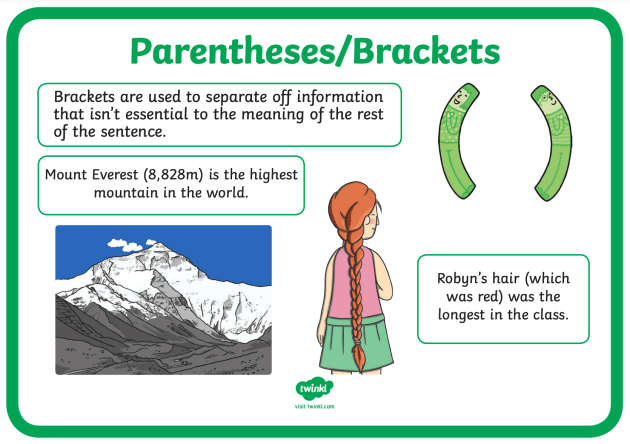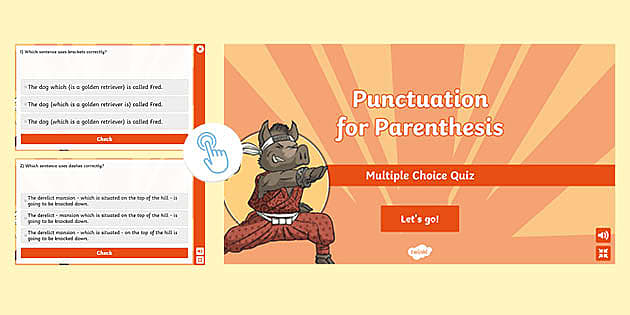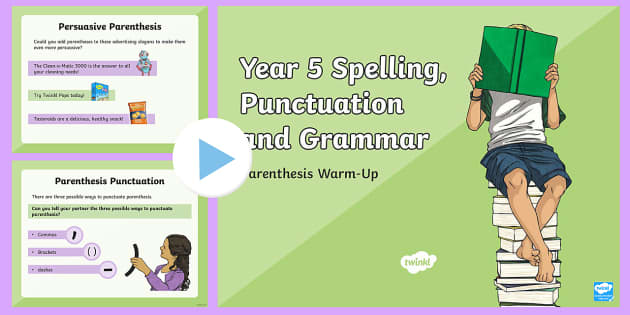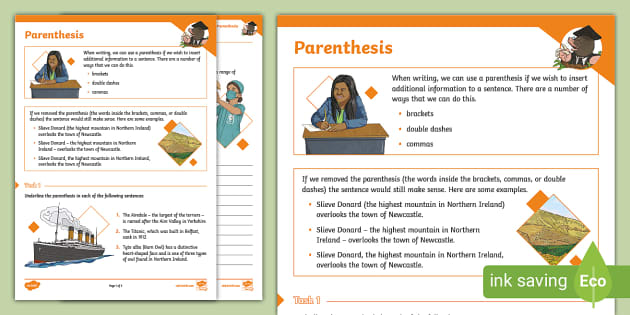

The term ‘parenthesis’ can refer to the added, non-essential information included in a sentence or to just the pair of punctuation marks used around the information. Pairs of brackets, commas or dashes can be used to indicate the non-essential information. ‘Parenthesis’ refers to a singular punctuation mark and ‘parentheses’ refers to the pair of punctuation marks that can be found around non-essential information in a sentence.
Parenthesis can be used to explain subject-specific or complex vocabulary, add extra information or to clarify meaning.

Below are examples of how brackets, dashes or commas are used to indicate parenthesis.
African elephants (the largest land mammals in the world) live in the southern hemisphere.
I went to the cinema to meet James (my brother).
Julie had to be at the doctor’s surgery at a specific time for her appointment (3 o’clock in the afternoon).
John Smith, a man who lives in the village, delivers everyone's milk.
The church, which has beautiful stained-glass windows, is in the middle of the town.
Harry, as soon as the bell rang, started packing his bag.
My mum – who loves to keep fit – enjoys running.
Darren – even though he had already eaten his dinner – was still hungry.
The actor – famous for being in a popular TV show – branched out into theatre.
In all of the examples above, the parenthesis can be removed to leave a main clause that makes sense on its own.
The term ‘parenthesis’ first appears in UKS2. By the end of Year 6, children are expected to correctly punctuate non-essential information with a pair of commas, dashes or brackets (all known parentheses). Parentheses are also often required when writing embedded relative clauses which is an UKS2 objective.
Using parenthesis allows children to add information without interrupting the flow of their writing. Children are expected to use a variety of sentence structures by the end of Year 6.
In end of UKS2 assessments, children may be required to insert parentheses into a sentence to show embedded clauses or to surround non-essential information. It has also been known for the grammar assessment to ask children to name alternative punctuation that could be used instead of commas to indicate parenthesis.
Parenthesis can be simply explained as extra information that is added to a sentence and surrounded by a pair of punctuation marks (parentheses).
It is important to be clear with the terminology surrounding parenthesis to help children understand what is being referred to:
Parenthesis usually comes up when learning about relative clauses. Writing the extra information when crafting relative clauses can help children to understand that the information is additional to the main clause.
Children will commonly see brackets in non-fiction writing where facts are further explained or made more specific. This can be a good starting point when teaching parenthesis.
|
The National Curriculum first mentions parenthesis in Year 5 where children are expected to use brackets, dashes or commas to indicate parenthesis. |
KS2 Parenthesis Warm-Up PowerPoint

FREE! - Punctuation for Parenthesis Multiple Choice SPaG Quiz - KS2 Revision
 Home
Home  Membership
Membership  Customer Support
Customer Support  Create
Create  Blog
Blog 






















